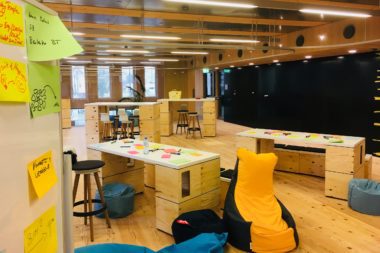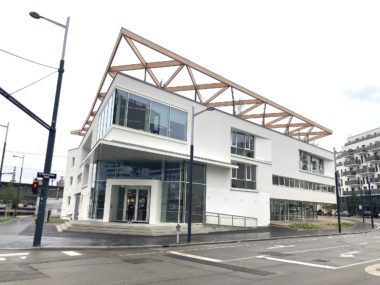After all these thoughts on innovation, on “learning from the future as it emerges” and on the distinction between “purpose” and “meaning,” it is now time to think about the difference between potentials and trends. Even though both lie in the future, and even though innovation is relevant to both of them, they are different phenomena.
One thing is certain: a trend and a phenomenon both deal with the future. While a trend is recognized as a change or movement that is already taking place, potential is more vague and usually lies further in the future. Once a trend is clearly visible (e.g. in fashion or technology), it is impossible to fully identify or comprehend its potential. Potential cannot be identified by observing users that embrace a specific trend, because potential is far ahead of the trend. It is something that is emerging but does not yet reveal itself. It is about unclassifiable behaviors, alternative (life) designs, subtle changes in value systems or mindsets, for example, that do not yet reveal themselves in concrete, existing objects, items or phenomena. A potential is always hidden or latent, it is “not yet,” and cannot be directly identified or perceived by our senses.
Potentials do not reveal themselves clearly, they are “in the air”
A potential is “in the air.” It is subtle and “under the surface” of what can already be perceived. One needs to immerse oneself in the field, explore it with empathy, get to know it from the inside out. Many potentials have their roots in changes that are now hard to recognize, such as changing social values or cultural shifts. As these changes cannot be pinned to a specific event or phenomenon, a “sense-making” process is required. “Sense-making” is a process of immersing oneself in the topic, of gaining a deep understanding of the subject and its context. It helps us to identify the essence of potential: What is the potential purpose, value or need behind it? What could be an unused niche? What are the implications for the next stages of transformation in the present?
Example: Blockchain technology as a trend and a potential
Blockchain technology is a good example. On the one hand, it is a trend that has drastically changed the way we conduct financial transactions or conclude contracts, for example. However, in terms of a future-oriented innovation perspective, this new technology and service is more of a projection from the past. It represents variations of existing problems, solutions and approaches.
But the potentials of the blockchain approach are much greater: they affect questions of quality and new ways of building trust, peer-to-peer interactions, distributed processing and decentralization, new forms of social contract, new forms of economic activity and knowledge work, and a lot more.
Innovation “from the inside out”
It is not yet clear what products and services will emerge – and it is even less clear what future needs and uses they will meet, and what niches they may reveal. The point is that we need, as a first step, to understand all these subjects and their relationships with each other, and to immerse ourselves in the underlying potentials. Right now, there’s no point in thinking about possible solutions or products, services or business models. Instead, we need to grasp the core of these subjects and find out which potentials of this core have not yet been exploited or still seek to emerge.
Only then does it make sense to think about possible needs, purposes, applications and solutions, and to innovate “from the inside out.” To innovate “from the inside out” is to develop more concrete artifacts from the potentials of the core. In most cases this ensures that such a process yields innovations that are novel, but also sustainable and fruitful. You will find more information in our blog posts entitled “Innovation Strategies”, “Innovation Challenges” and “Innovation from within”.
Subscribe to
our newsletter
Get special insights on radical innovation and building desirable futures every second month.
Image: © Helena Lopes via Unsplash


